
Roots
The journey to understanding our hair, particularly its unique response to moisture, often begins with a quiet observation ❉ the way water beads on the surface, reluctant to sink in, or the unexpected persistence of a dewy sheen. This subtle dance of liquid upon strand holds a deeper story, one etched into the very architecture of each hair fiber. It is a story that speaks of an inner world, shielded and protected, revealing a characteristic known as low porosity. To truly grasp what low porosity hair entails, we must first descend into the microscopic realm, where the foundational elements of hair biology unfold, offering insights into its distinct behavior and the wisdom it imparts for its care.

Hair’s Outer Shield
At its core, every strand of hair possesses three primary layers ❉ the medulla, the cortex, and the cuticle. The cuticle, serving as the outermost layer, consists of overlapping, flattened cells, much like shingles on a roof. These cells, typically numbering between six and ten layers, form a protective barrier for the inner cortex, which houses the hair’s strength, elasticity, and pigment. In the case of low porosity hair, these cuticle scales lie particularly flat and tightly sealed against one another.
This compact arrangement creates a formidable shield, making it challenging for water, oils, and conditioning agents to penetrate the hair shaft. Consequently, moisture struggles to enter, and once it does, it tends to remain trapped within, leading to both challenges and advantages.
Low porosity hair features tightly sealed cuticle scales, creating a robust barrier that resists moisture absorption but retains hydration once it penetrates.

The Water’s Hesitant Dance
The reluctance of water to permeate low porosity hair is a direct consequence of this tightly bound cuticle. When water is applied, it often forms beads on the surface, taking an extended period to saturate the hair. This phenomenon, while sometimes frustrating for those seeking immediate hydration, signifies the hair’s natural defense mechanism.
The intact cuticle also means that low porosity hair is generally more resilient to chemical treatments and environmental damage, as the inner cortex is well-guarded. This inherent resistance, however, also means that beneficial ingredients in hair products might struggle to reach their intended destination within the hair shaft.

The Genetic Whisper
The porosity level of hair is not merely a matter of chance; it is significantly influenced by genetics. While external factors like heat styling and chemical treatments can alter hair porosity over time, the fundamental structure of low porosity hair is often an inherited trait. Research indicates that genetic factors play a major role in determining hair texture, whether straight, wavy, or curly. This genetic predisposition means that individuals with certain hair types, particularly those with very straight or finely textured hair, may naturally exhibit lower porosity.
Interestingly, a study on the genomic variation in textured hair highlights that African hair, despite its common association with dryness, exhibits the lowest radial swelling percentage in water due to its high apolar lipid levels compared to Asian and European hair. This suggests a complex interplay between genetic lipid composition and water interaction, which might contribute to characteristics often seen in low porosity strands, even within diverse textured hair populations. This finding challenges the simplistic notion that all textured hair is inherently highly porous, inviting a more nuanced understanding of genetic influences on hair properties across different ancestral backgrounds.
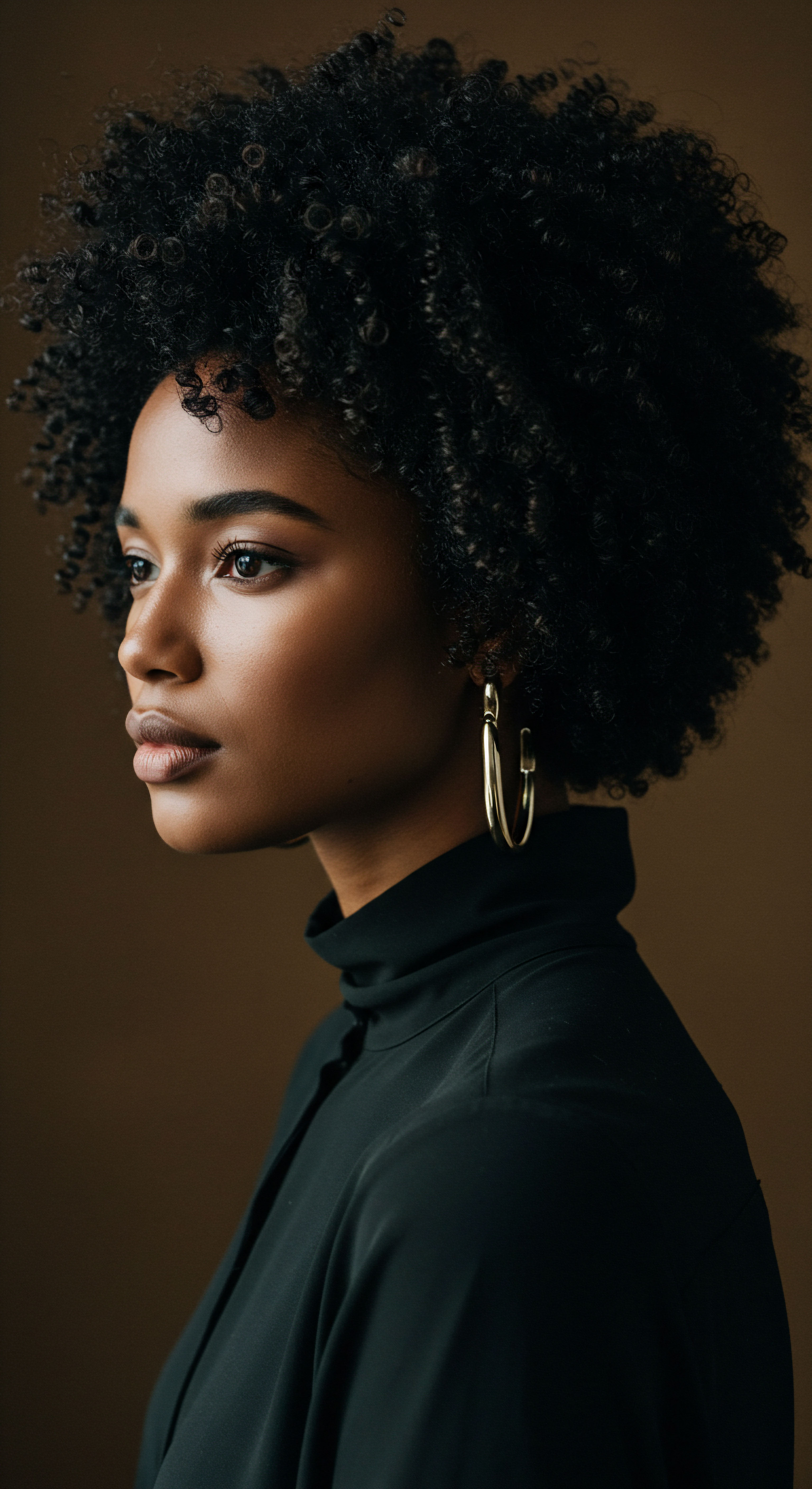
Why Does Hair Porosity Matter?
Understanding your hair’s porosity is a cornerstone of effective hair care. It dictates how your hair responds to products, treatments, and even the environment. For low porosity hair, this understanding guides the selection of products that truly deliver moisture rather than merely sitting on the surface, and informs techniques that encourage absorption. Without this foundational knowledge, hair care can feel like a guessing game, leading to product buildup, dryness, and frustration.
Knowing the intrinsic characteristics of your hair, such as its porosity, empowers you to create a regimen that works harmoniously with its natural inclinations, rather than against them. It transforms the daily ritual of hair care from a struggle into a practice of gentle attentiveness, allowing the unique qualities of low porosity hair to shine through.
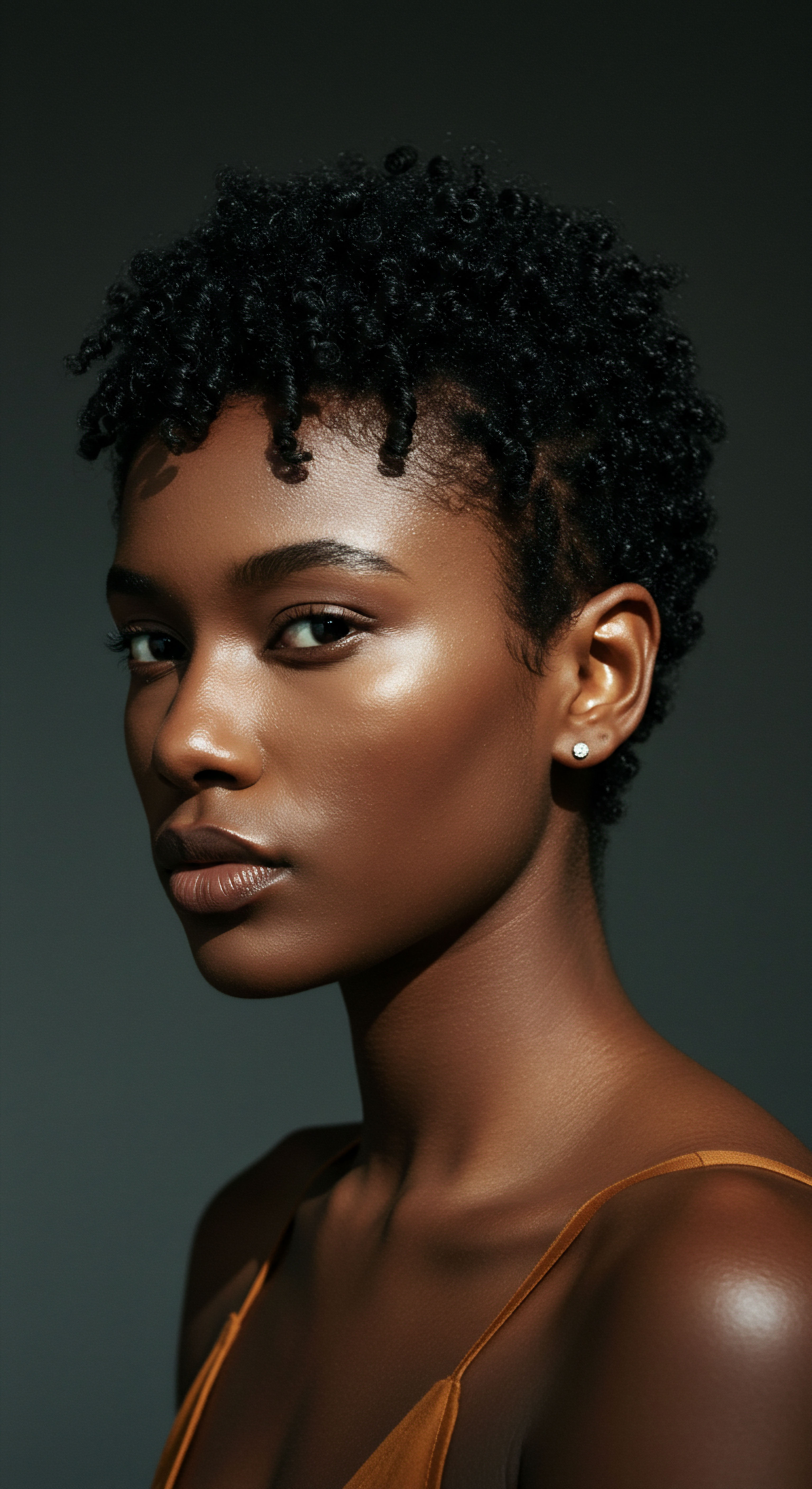
Ritual
Stepping from the quiet contemplation of hair’s fundamental nature, we now turn our attention to the rhythms of daily care. The essence of understanding low porosity hair lies not just in knowing its structure, but in translating that knowledge into a thoughtful, responsive regimen. This section is a guide, a gentle hand leading you through the practical wisdom that allows low porosity hair to truly flourish, moving beyond surface-level attempts at hydration to practices that truly speak to its unique needs. It is here, in the consistent application of tailored techniques and selected products, that the science of low porosity hair finds its most beautiful expression.

Preparing the Strands for Acceptance
The tightly sealed cuticle of low porosity hair means that preparing the strands for moisture is paramount. Simply applying products may lead to them sitting on the surface, creating a heavy, greasy feel without providing genuine hydration. The ritual begins with cleansing, a delicate balance of removing buildup without stripping the hair’s inherent moisture.
- Cleansing ❉ Opt for sulfate-free shampoos or cleansing conditioners. These formulations cleanse gently, helping to lift any surface accumulation without excessively disturbing the cuticle. Regular clarifying treatments, perhaps once a month, can also be beneficial to remove persistent product residue that might hinder moisture absorption.
- Warmth ❉ Heat is a valuable ally for low porosity hair. Warm water during washing and rinsing helps to subtly encourage the cuticle to lift, allowing for better penetration of subsequent products. Applying a warm, damp towel over deep conditioning treatments or using a hair steamer can significantly enhance product absorption. This gentle warmth coaxes the cuticles to open, inviting the goodness within.
- Pre-Poo ❉ Consider a pre-shampoo treatment, often called a pre-poo. Applying a lightweight oil or conditioner to dry hair before cleansing can provide a protective layer, reducing the stripping effect of shampoo and preparing the hair to receive moisture more readily.
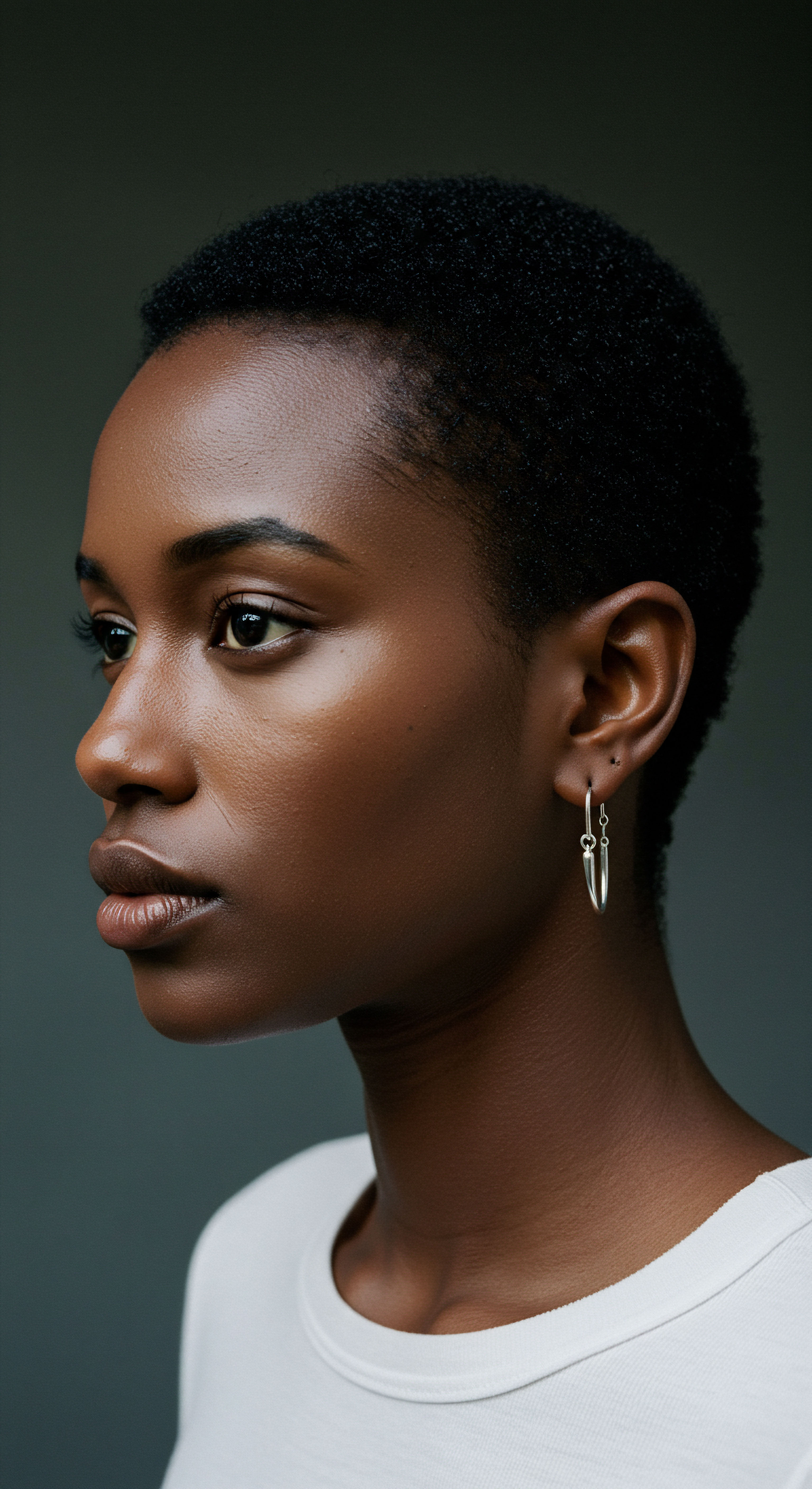
The Art of Gentle Hydration
Once the hair is prepared, the focus shifts to delivering moisture that truly sinks in. This requires a thoughtful approach to product selection and application.
- Lightweight Products ❉ Heavy butters and oils tend to sit on low porosity hair, leading to buildup and a weighed-down feeling. Prioritize lightweight, water-based conditioners, leave-ins, and moisturizers. Products with humectants like glycerin or aloe vera can draw moisture from the air into the hair, aiding hydration.
- Layering Techniques ❉ Applying products in thin layers can be more effective than a single heavy application. This allows each layer to be absorbed gradually. The Liquid, Cream, Oil (LCO) method, or a variation thereof, can be particularly useful, focusing on water-based products first.
- Consistent Deep Conditioning ❉ Deep conditioning is a non-negotiable step. These treatments, especially when applied with gentle heat, provide a concentrated dose of hydration and nutrients. Aim for a deep conditioning session at least once a week.
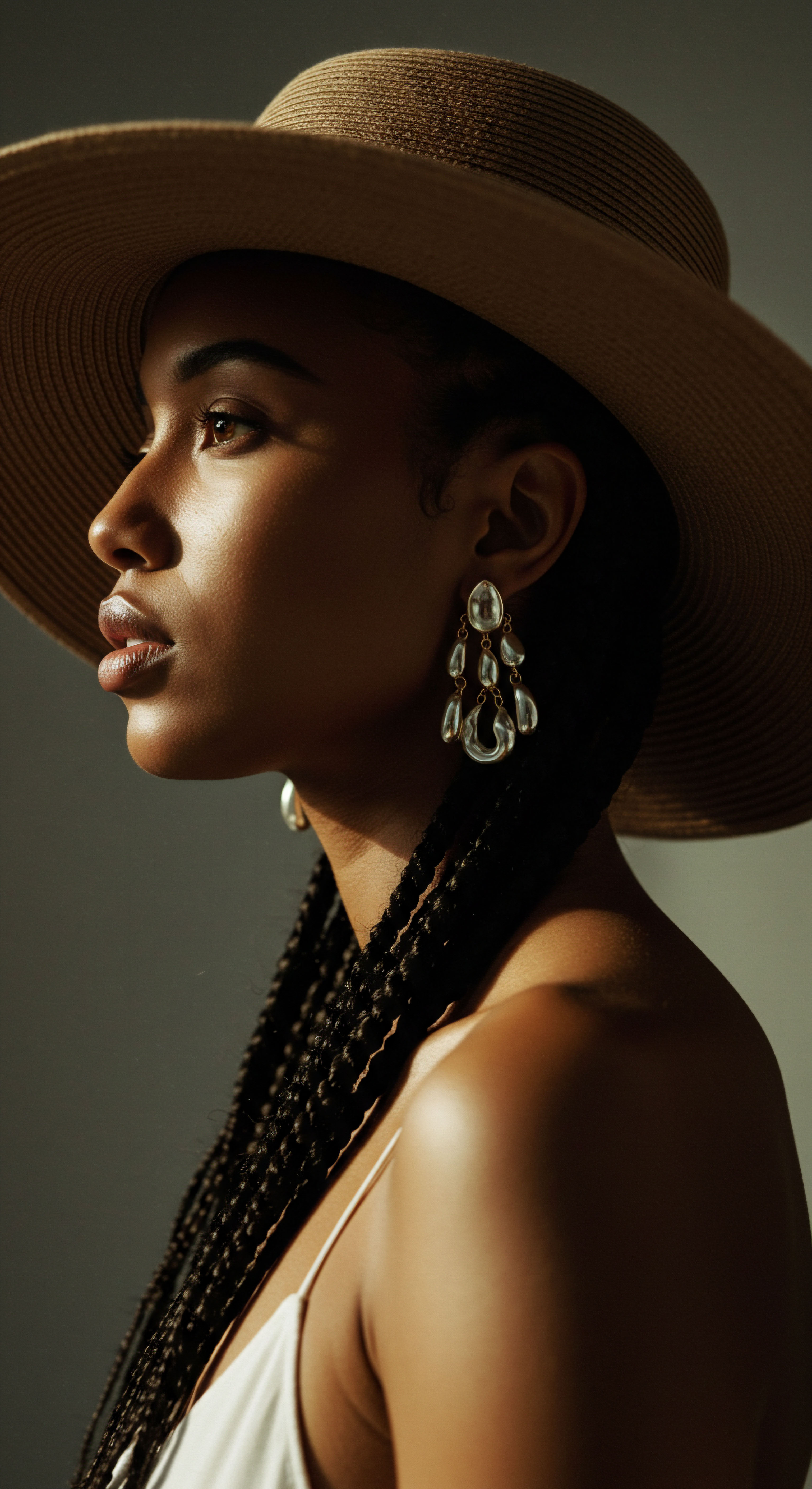
Sealing in Sustenance
While low porosity hair retains moisture well once absorbed, sealing it in helps to prolong hydration and protect the strands.
- Light Oils ❉ After moisturizing, a light oil can be used to seal the cuticle and add shine. Oils like jojoba, grapeseed, or sweet almond are often well-received by low porosity hair, providing a gentle barrier without creating excessive film.
- Avoid Over-Oiling ❉ The natural oils produced by the scalp can easily travel down straight hair shafts, often providing sufficient surface lubrication for low porosity hair. Excessive application of additional heavy oils can lead to buildup.
The efficacy of these rituals rests on consistency and attentiveness. Each strand holds its own unique story, and by listening to its response, we refine our practices, ensuring that the care we offer is truly resonant.
Consistent application of lightweight, water-based products, often with gentle heat, helps low porosity hair absorb and retain moisture effectively.
| Care Aspect Cleansing |
| Recommended Practice for Low Porosity Hair Sulfate-free shampoos, clarifying treatments (monthly) |
| Why It Works Prevents buildup; gentle on tightly closed cuticles. |
| Care Aspect Moisture Application |
| Recommended Practice for Low Porosity Hair Warm water, steamers, warm towel wraps |
| Why It Works Heat helps subtly lift cuticles for better absorption. |
| Care Aspect Product Type |
| Recommended Practice for Low Porosity Hair Lightweight, water-based conditioners, leave-ins, humectants |
| Why It Works Minimizes surface residue; draws moisture into the hair. |
| Care Aspect Sealing |
| Recommended Practice for Low Porosity Hair Light oils like jojoba or grapeseed |
| Why It Works Provides a gentle barrier without weighing hair down. |
| Care Aspect Deep Conditioning |
| Recommended Practice for Low Porosity Hair Regularly, with heat assistance |
| Why It Works Ensures concentrated hydration penetrates deeply. |
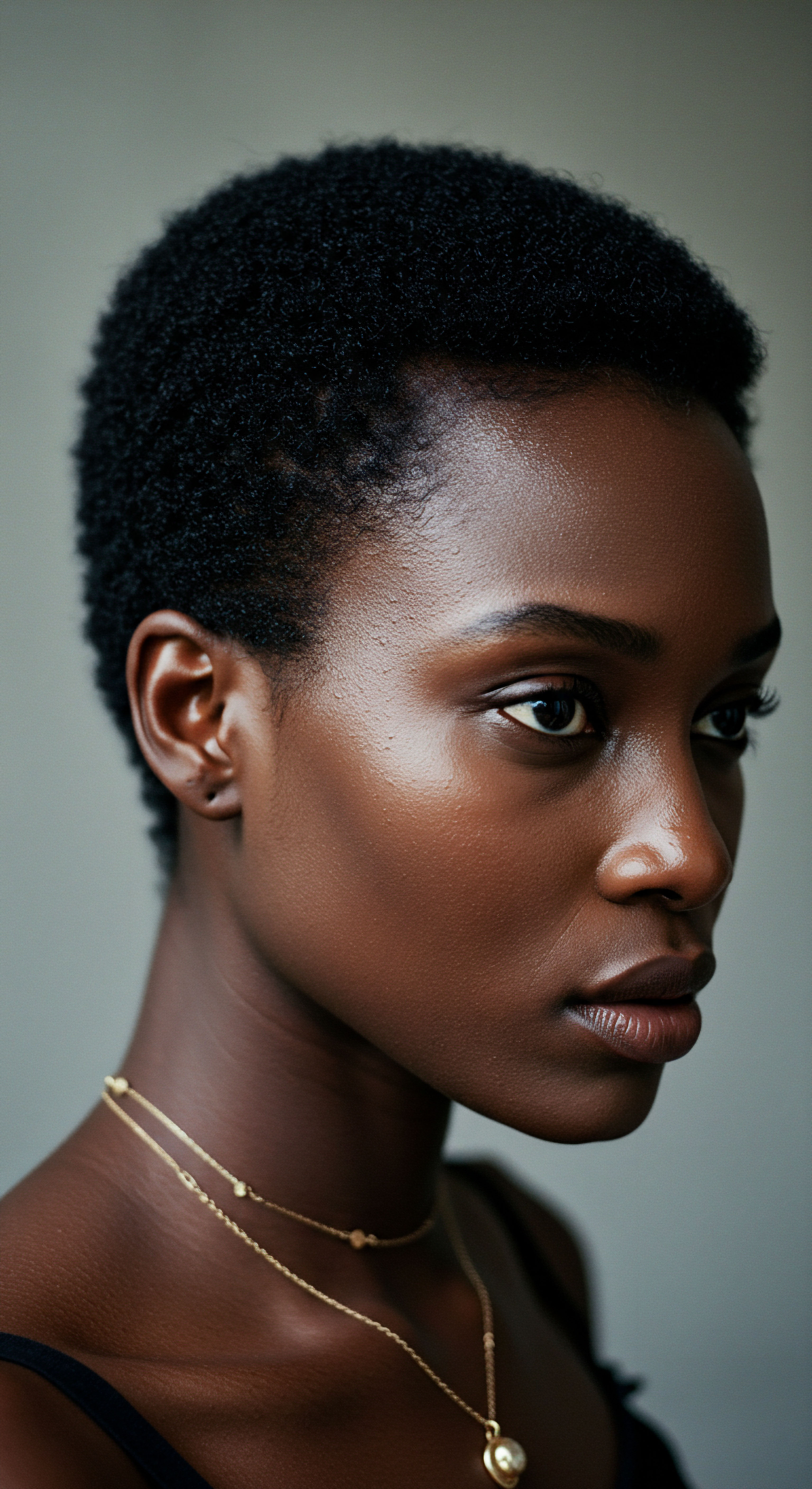
Relay
Having explored the fundamental structure and daily rhythms of low porosity hair, we now extend our gaze to a more expansive vista, where science, cultural practices, and nuanced understanding converge. This section invites a deeper contemplation, posing questions that unravel the complexities of hair porosity beyond mere surface characteristics. How do scientific discoveries shape our understanding of product efficacy on these particular strands?
What wisdom do ancestral practices offer, and how do they align with contemporary knowledge? This is where the story of low porosity hair transcends the individual, becoming a dialogue between the microscopic and the magnificent, the laboratory and the lived experience.
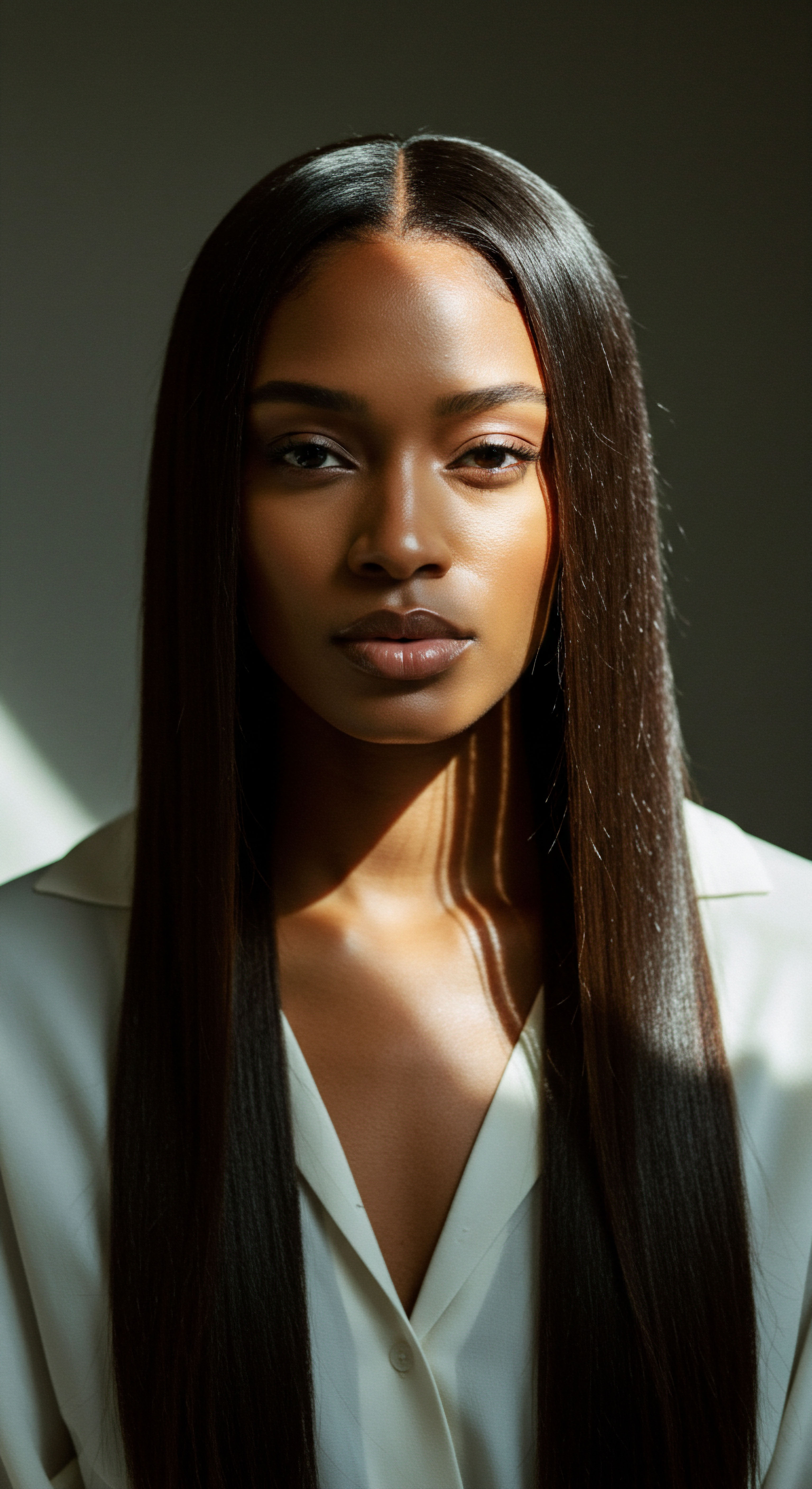
Beyond the Surface a Scientific Dialogue
The challenge of product penetration into low porosity hair is a subject of ongoing scientific inquiry. The outermost layer of the hair, the cuticle, is covered by a thin, lipid-based coating known as the F-layer (or 18-methyleicosanoic acid, 18-MEA). This layer contributes significantly to the hair’s hydrophobicity, meaning its resistance to water. In low porosity hair, this F-layer, along with the tightly packed cuticle cells, presents a formidable barrier.
Research into the diffusion of substances into hair fibers has revealed that smaller molecules, particularly those that are less ionized, tend to penetrate hair more effectively. This is because they can navigate the lipid bilayers within the cell membrane complex (CMC), which acts as an intercellular cement binding the cuticle cells. Larger molecules or those with a strong electrical charge may struggle to pass through this compact structure, explaining why heavier products often sit on low porosity hair rather than absorbing.

Does Hair Porosity Change Over Time?
While genetics largely determine one’s inherent hair porosity, external factors certainly influence it over a lifetime. Chemical treatments such as coloring, relaxing, or perming can significantly increase hair porosity by damaging the cuticle layer, causing it to lift or become compromised. Similarly, excessive heat styling, rough combing, and even environmental exposure like UV radiation can degrade the protective F-layer and cuticle, making hair more porous. This dynamic nature means that even if you begin with low porosity hair, improper care or environmental stressors can shift its characteristics, making ongoing assessment and responsive care vital.
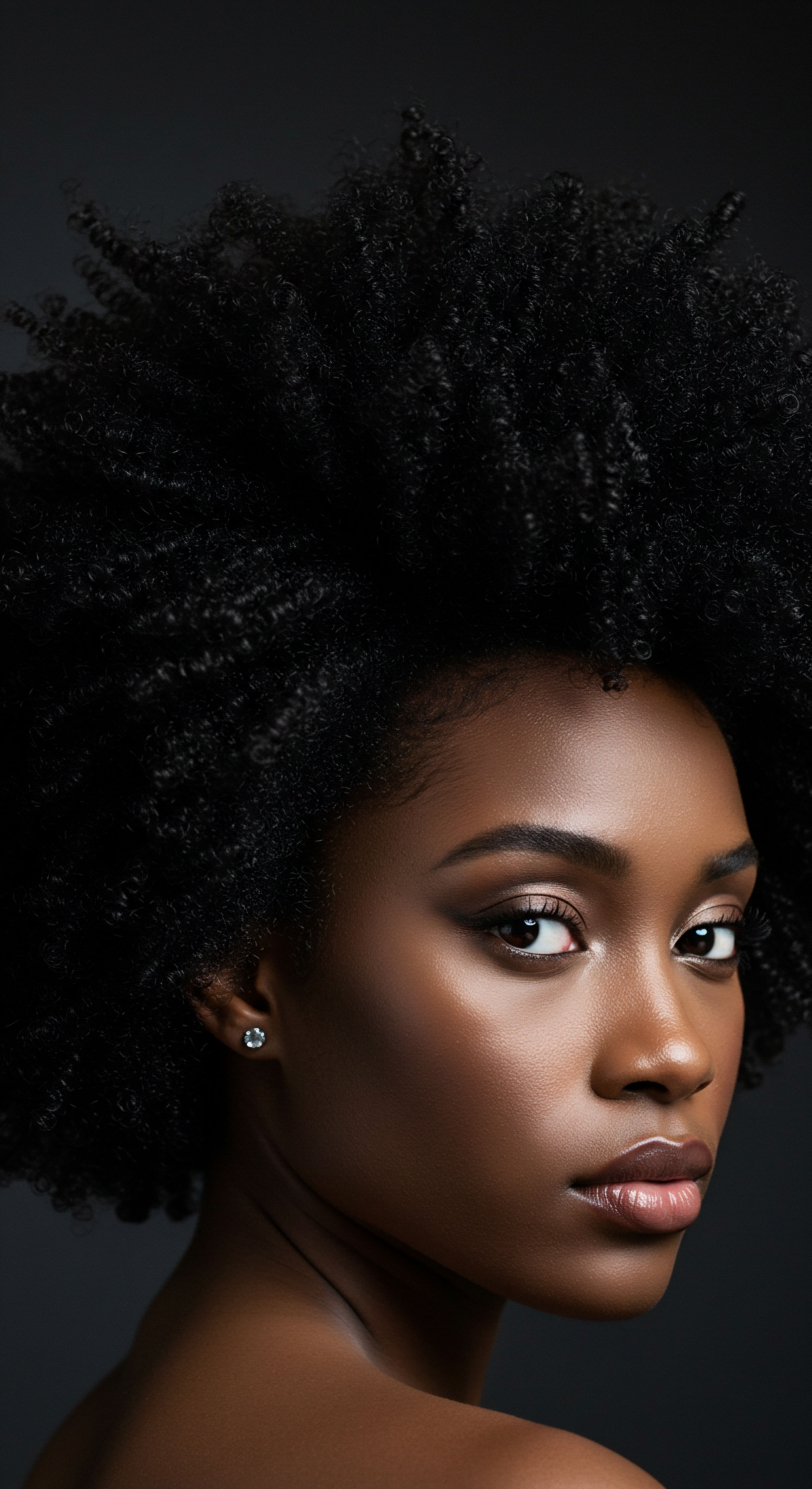
Historical Echoes in Hair Practices
The quest for hair health and beauty is not a modern phenomenon; it is a legacy carried through generations, particularly within communities with textured hair. Traditional African hair care practices, passed down through oral tradition and lived experience, often reflect an intuitive understanding of hair’s needs, predating formal scientific classification.
For centuries, various African communities have utilized natural ingredients like shea butter, coconut oil, and aloe vera to nourish and protect hair. While some contemporary hair care philosophies advocate against heavy oils and butters for low porosity hair due to potential buildup, traditional methods often involved their use, albeit sometimes in specific contexts or with particular preparation. For example, the Basara Tribe of Chad traditionally applies an herb-infused raw oil and animal fat mixture to their hair weekly for length retention, braiding it afterward. This practice, while appearing heavy, might be effective due to the application method, the specific composition of the ingredients, and the primary goal of length retention rather than curl definition, suggesting a different relationship with moisture and sealing.
These practices underscore a deep cultural connection to hair as a symbol of identity, status, and resilience. The deliberate application of natural elements, often accompanied by communal rituals of braiding and styling, speaks to a holistic approach to hair care that transcends mere aesthetics, linking it to well-being and cultural continuity.

Challenging Prevailing Wisdom
The understanding of hair porosity continues to evolve, sometimes challenging long-held beliefs. A common misconception, for instance, is that all textured or curly hair automatically falls into the high porosity category. However, as noted earlier, genetic factors can result in low porosity within textured hair types, highlighting the diversity within the hair community. This calls for a personalized approach to hair care, moving beyond broad generalizations to truly understand an individual’s unique hair needs.
A significant area of ongoing research pertains to how different oils and ingredients penetrate textured hair. A study published in 2025 indicated that while oils like argan, coconut, and avocado can penetrate textured hair, their benefits can be inconsistent, especially in bleached hair. The study noted that straight hair often exhibits more uniform oil diffusion due to its cortical structure, whereas textured hair’s unique cortical arrangement can lead to uneven oil penetration.
This suggests that even when an oil is known to penetrate, its distribution and overall effect might vary considerably depending on the hair’s specific texture and condition. Such findings encourage formulators and consumers alike to consider the subtle complexities of hair morphology when selecting and applying products.
Scientific research on hair porosity reveals the cuticle’s F-layer and lipid composition influence moisture resistance, while traditional practices offer historical wisdom on natural care.
| Ingredient Type Humectants (e.g. Glycerin, Aloe Vera) |
| Benefits for Low Porosity Hair Attract and draw moisture from the air into the hair. |
| Considerations for Use Effective in humid climates; may need sealing in dry air. |
| Ingredient Type Lightweight Oils (e.g. Jojoba, Grapeseed) |
| Benefits for Low Porosity Hair Provide a light seal without heavy residue. |
| Considerations for Use Apply sparingly after water-based products. |
| Ingredient Type Hydrolyzed Proteins (small molecular weight) |
| Benefits for Low Porosity Hair Can penetrate cuticle to strengthen hair. |
| Considerations for Use Use judiciously; too much can cause stiffness. |
| Ingredient Type Water-Based Products |
| Benefits for Low Porosity Hair Provide primary hydration source. |
| Considerations for Use Essential foundation for low porosity regimens. |

The Enduring Strength of Textured Strands
The journey of understanding low porosity hair, especially within the context of textured hair, is one of empowerment. It is about acknowledging the scientific realities of hair structure and its response to care, while simultaneously honoring the rich cultural heritage that has always celebrated the versatility and resilience of Black and mixed-race hair. The dialogue between scientific investigation and ancestral knowledge continually refines our practices, leading to regimens that are not only effective but also deeply respectful of each individual’s unique crown. The complexities of low porosity hair, rather than being a hindrance, become a pathway to a more profound connection with one’s own hair story.

Reflection
As we conclude our exploration of low porosity hair, a sense of gentle wisdom settles, a quiet understanding of the intricate dance between our hair’s inherent nature and the care we offer. It is a reminder that beauty resides not in conformity, but in the harmonious relationship we cultivate with our unique selves. Each strand, with its tightly sealed cuticles and hesitant embrace of moisture, holds a story of resilience and distinct needs. Our path forward is illuminated by the knowledge we have gathered, encouraging a mindful approach that celebrates individuality and nurtures the vibrant life within our hair, allowing it to flourish in its own remarkable way.
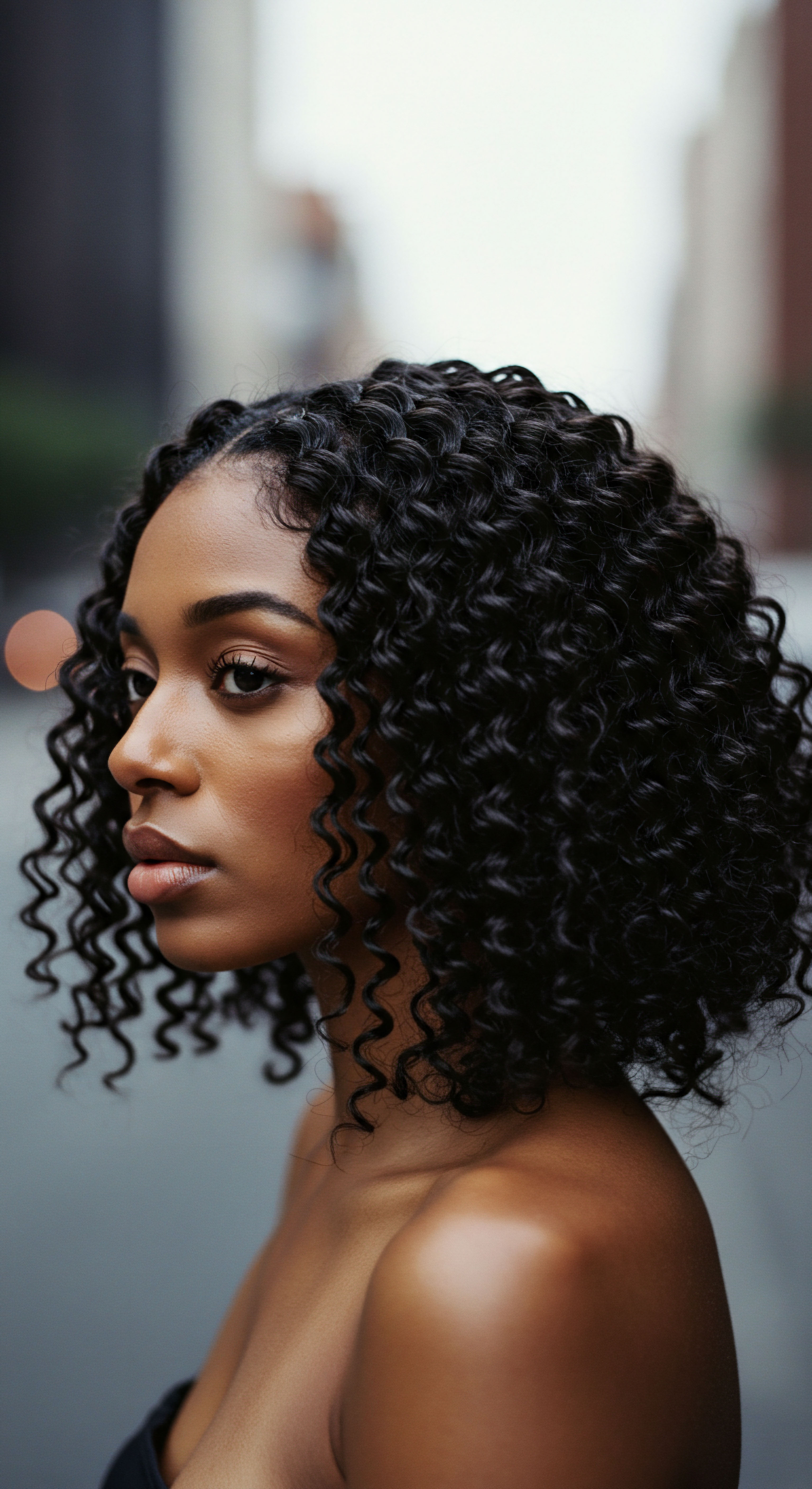
References
- Chandrashekar, B. S. (2018). IADVL Textbook of Trichology. Jaypee Brothers Medical Publishers.
- Davis-Sivasothy, A. (2011). The Science of Black Hair ❉ A Comprehensive Guide to Textured Hair Care. Saja Publishing Company.
- Evans, T. (2008). True porosity measurement ❉ a new way to study hair damage mechanisms. Journal of Cosmetic Science, 59, 263–289.
- Robbins, C. R. (2012). Chemical and Physical Behavior of Human Hair (5th ed.). Springer.
- Frangie, M. Barnes, L. & Milady. (2012). Milady’s Standard Cosmetology Textbook (1st ed.). Cengage Learning.
- Rele, S. & Mohle, R. B. (2003). Effect of mineral oil, sunflower oil, and coconut oil on prevention of hair damage. Journal of Cosmetic Science, 54, 175-192.
- Maes, E. Bell, F. Hefer, C. Thomas, A. Harland, D. Noble, A. & Grosvenor, A. (2021). Insights in human hair curvature by proteome analysis of two distinct hair shapes. Journal of Cosmetic Science, 72(3), 249–267.
- Tosti, A. (2015). Hair and Scalp Treatments ❉ A Practical Guide. CRC Press.
- White, S. & White, G. (1995). Slave Hair and African-American Culture in the Eighteenth and Nineteenth Centuries. Journal of Southern History, 61, 45.
- Caldwell, P. M. (1991). A Hair Piece ❉ Perspectives on the Intersection of Race and Gender. Duke Law Journal, 1991, 365.
- Johnson, L. & Bankhead, A. (2014). The Black Woman’s Hair Bible ❉ Everything You Have Always Wanted to Know About Your Hair.
- Tarlo, E. (2016). Hair ❉ Styling, Culture and Fashion. Bloomsbury Academic.